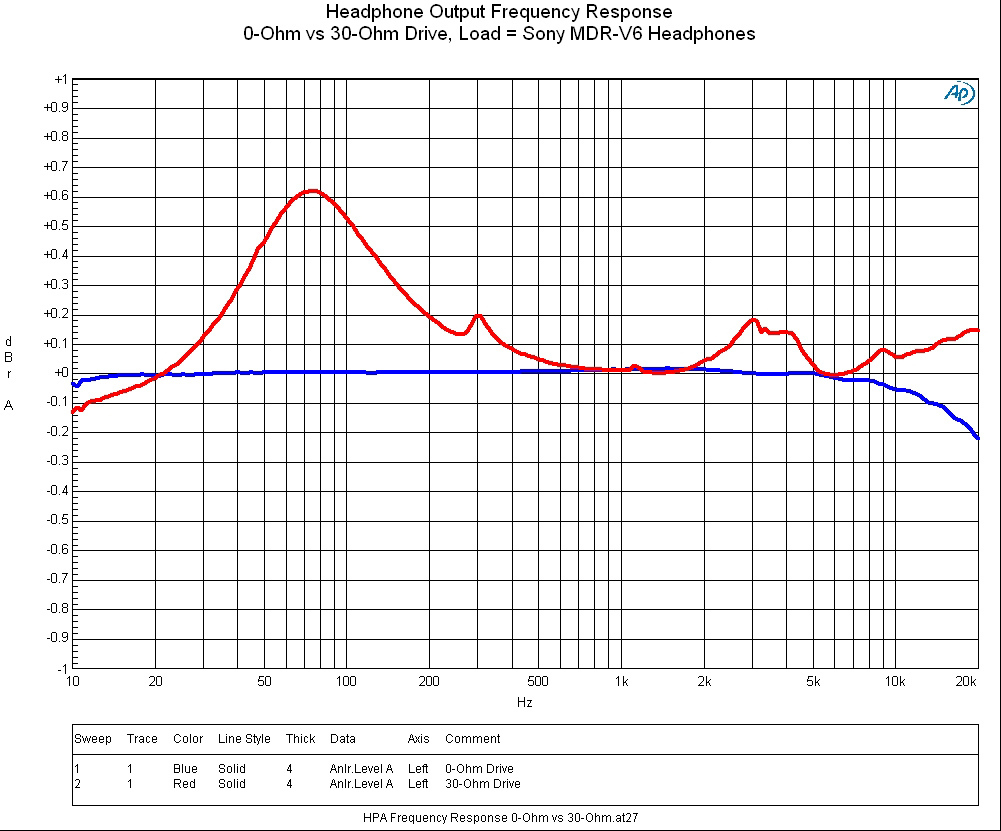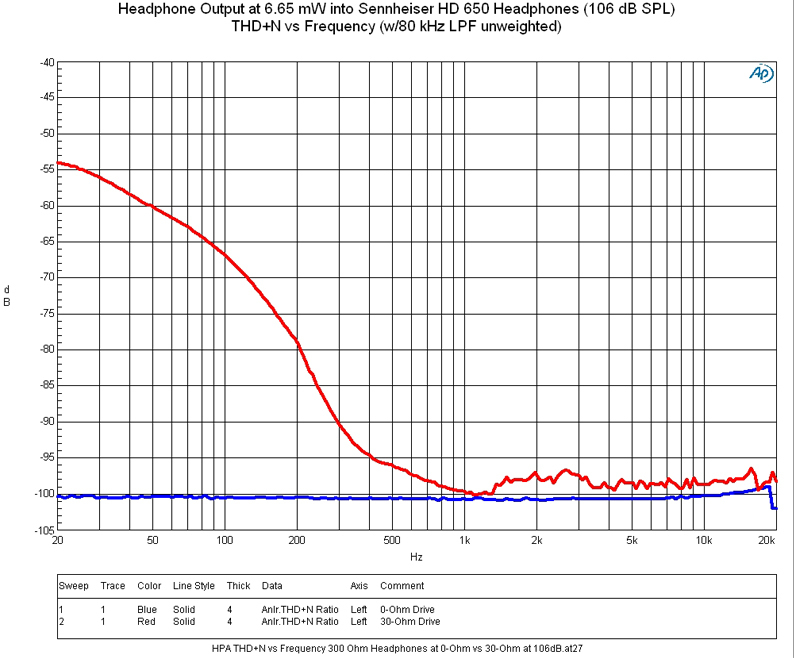calibro
New Head-Fier
- Joined
- Aug 7, 2012
- Posts
- 30
- Likes
- 11
Thank you for answers and for share your experiences!!!! 



I would be very concerned about hooking these headphones up to a 140 watt speaker amplifier when the maximum load they can handle is 0.5 W.I have a number of extremely high quality tube and solid state amps for speakers. I am wondering about using them with Sennheiser HD800 headphones, which I do not have yet (backordered). I know that my hundred watt transformer coupled tube amps will lost a lot of power at that impedance, and it's not an efficient use of gear and electricity, but are the results typically good when doing this?
I also have 140 watt OTL (Atma-Sphere) amps I could try.
Anything to watch out for when doing this? Have folks had good results?
It sounds like what you are hearing is a change in the frequency response of the headphones caused by a damping factor that is too low. The HD800 have a 300 Ω impedance, which means that the maximum output of the amplifier should be 37.5 Ω.I decided to try the idea I talked about earlier of loading the output of the amp at 10 ohms (could not find a high quality 8 ohm non-inductive wire wound resistor) and a dropping resistor after that and before the phones, starting with 100 ohms.
Well, the sound is phenomenal. A huge difference in width (not my most important thing), a major increase in refinement (really I'm saying major decrease in grain/distortion), beautiful sweet sweet, delicate highs with tremendous extension, deeper bass (the HD800s go amazingly low in the bass if the amp is stiff enough). The transparency is really amazing.


I'm not sure to be honest - it looks like it shouldn't affect the frequency response, but may negatively impact other characteristics?Those problems occurs even with a costant impedance curve (as for orthos) or not ??

I am assuming you are unhooking your speakers...otherwise you would be listening to the speakers and headphones at the same time.
So, if the speakers are unhooked and the amp is just playing the cans through the Headtap, you are using the device in a way it is not intended. There is no parallel resistor across the amp leads so the amp will be playing into a high impedance load. A apeaker amp is not intended to do this so results will vary and potential for oscillation will vary.
This device uses the monitor speakers as the lower impedance load the amp would like to see, and you are just tapping off to play your headpones: the load on the amp would remain nearly identical to what it was, it would not know there was a high impedance load tapped off.

Interesting topic.
I'm thinking of building a Millet DCPP Engineers Tube Amp which is a 18 wpc into 8 ohm speaker amp (transformer coupled output).
Output impedance is about 2.5 ohms.
I want to use the following 4 different headphones with this:
Denon D7000 25 ohm 108dB sensitivity
Audio Technica ATH w3000anv 40 ohm 102dB sensitivity
Audeze LCD2 50 ohm 91dB sensitivity
Hifiman HE500 45 ohm 89dB sensitivity
1) Would I need to set up some kind of "impedance switch" that switches between various resistors?
2) Or would an "averaged" value single resistor work?
3) Or should I set one resistor value for the most sensitive headphones that are most likely to pick up background hiss/noise and just use more volume pot movement for the other headphones?

